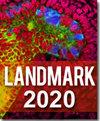右美托咪定通过α2-AR/AMPK/mTOR途径增强自噬活性,从而缓解缺血/再灌注相关急性肾损伤
IF 3.1
4区 生物学
Q2 Immunology and Microbiology
引用次数: 0
摘要
背景:据报道,右美托咪定(DEX)可以预防缺血再灌注(I/R)损伤和相关的肾脏损伤,但其潜在机制尚未确定。方法:Wistar大鼠行单侧肾切除术,再灌注前夹持剩余肾1 h,建立实验模型系统。随机分为Sham组、DEX + Sham组、DEX + I/R组、ATI(阿替帕唑,α 2-肾上腺素能受体抑制剂)+ DEX + I/R组和3-MA(3-甲基腺嘌呤,自噬抑制剂)+ DEX + I/R组。评估血清肾功能生物标志物、急性肾损伤(AKI)组织病理学评分、血清炎症因子、氧化还原生物标志物、自噬通量标志物和自噬体数量。我们还分析了与自噬途径相关的蛋白质水平,包括mTOR和AMPK。结果:与假对照组相比,I/R组血清肌酐和尿素氮水平显著升高,AKI评分、血清炎症细胞因子浓度(IL-6、IL-1 β和TNF-α)和血清氧化应激生物标志物丙二醛(MDA)水平也显著升高。与I/R模型大鼠相比,DEX + I/R组所有这些参数均显著降低。与假对照组相比,I/R组大鼠的肾脏自噬通量相关生物标志物水平和自噬体数量也显著降低,而DEX给药部分恢复了这些大鼠的正常自噬通量。急性I/R也抑制肾脏AMPK的表达,同时增加mTOR的表达,而DEX逆转了这些作用。DEX对I/ r相关AKI的有益影响被ATI或3-MA消融。结论:这些分析为DEX通过α 2-AR/AMPK/mTOR途径介导的自噬活性增强来保护I/ r相关AKI的能力提供了强有力的证据。本文章由计算机程序翻译,如有差异,请以英文原文为准。
Dexmedetomidine Alleviates Ischemia/Reperfusion-Associated Acute Kidney Injury by Enhancing Autophagic Activity via the α2-AR/AMPK/mTOR Pathway
Background : Dexmedetomidine (DEX) reportedly protects against ischemia-reperfusion (I/R) injury and associated damage to the kidneys, but the underlying mechanisms have yet to be established. Methods : Unilateral nephrectomy was performed in Wistar rats, and the remaining kidney was clamped for 1 h prior to reperfusion to establish an experimental model system. These animals were then randomized into Sham, DEX + Sham, DEX + I/R, ATI (Altepamizole, α 2-adrenergic receptor inhibitor) + DEX + I/R, and 3-MA (3-methyladenine, autophagy inhibitor) + DEX + I/R groups. Serum renal function biomarkers, acute kidney injury (AKI) histopathological scores, serum inflammatory factors, redox biomarkers, markers of autophagic flux, and autophagosome numbers were assessed. Levels of proteins related to the autophagic pathway, including mTOR and AMPK, were also analyzed. Results : Serum creatinine and urea nitrogen levels in the I/R group were significantly elevated over those in sham control rats, as were AKI scores, serum inflammatory cytokine concentrations (IL-6, IL-1 β , and TNF-α ), and serum levels of the oxidative stress biomarker malondialdehyde (MDA). All of these parameters were significantly reduced in the DEX + I/R group relative to I/R model rats. I/R group rats also exhibited significant decreases in renal levels of autophagic flux-related biomarkers and autophagosome numbers relative to sham controls, while DEX administration partially restored normal autophagic flux in these rats. Acute I/R also suppress the expression of AMPK in the kidney while increasing mTOR expression, and DEX reversed these effects. The beneficial impact of DEX on I/R-associated AKI was ablated by ATI or 3-MA administration. Conclusions : These analyses provide strong evidence for the ability of DEX to protect against I/R-associated AKI via the α 2-AR/AMPK/mTOR pathway-mediated enhancement of autophagic activity.
求助全文
通过发布文献求助,成功后即可免费获取论文全文。
去求助
来源期刊

Frontiers in Bioscience-Landmark
生物-生化与分子生物学
CiteScore
3.40
自引率
3.20%
发文量
301
审稿时长
3 months
期刊介绍:
FBL is an international peer-reviewed open access journal of biological and medical science. FBL publishes state of the art advances in any discipline in the area of biology and medicine, including biochemistry and molecular biology, parasitology, virology, immunology, epidemiology, microbiology, entomology, botany, agronomy, as well as basic medicine, preventive medicine, bioinformatics and other related topics.
 求助内容:
求助内容: 应助结果提醒方式:
应助结果提醒方式:


